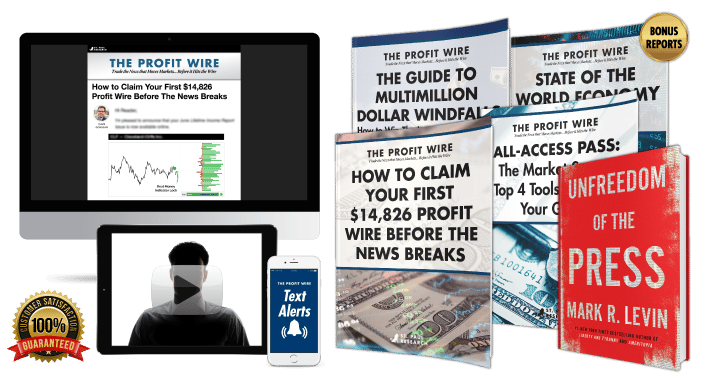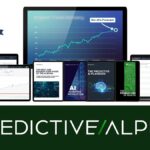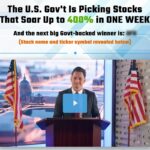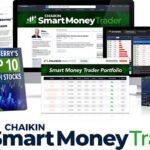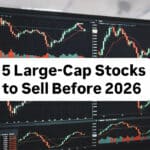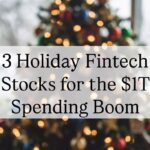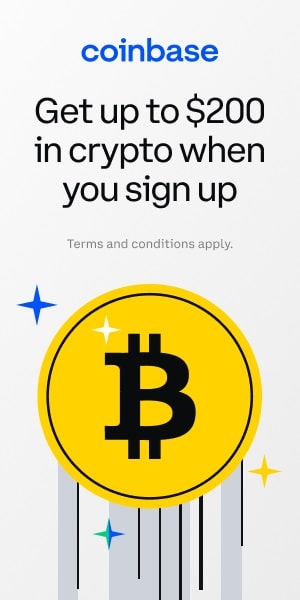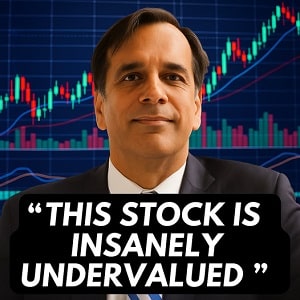Key Takeaways: Doubles Anomaly & Breakout 2025
Q1: What is the Doubles Anomaly?
A: The Doubles Anomaly is a market pattern where roughly half of all stocks that double in price go on to double again. It’s backed by decades of historical data across thousands of companies.
Q2: Why do some stocks double multiple times?
A: Stocks that double typically have strong fundamentals — growing revenues, expanding margins, and market momentum. When these drivers persist, the stock may enter a second Breakout Zone, producing another surge.
Q3: How do I know which stocks might double again?
A: Look for companies with proven growth, improving financial metrics, and positive institutional interest. Tools like Joel Litman’s Altimeter Pro and the Breakout Screener can help identify stocks in the Breakout Zone.
Q4: Is it too late to buy a stock that already doubled?
A: Not necessarily. Half of doubling stocks repeat, and history shows that subsequent surges can exceed the first. The key is verifying that fundamentals and momentum remain strong.
Q5: What is the Breakout Zone?
A: The Breakout Zone is the sweet spot where fundamentals, momentum, and market perception align — creating the highest probability for a second doubling.
Q6: Which sectors are most likely to see repeat doublers in 2025?
A: Current trends suggest AI and semiconductors, biotech, and clean energy/electrification are leading candidates for entering the Breakout Zone.
Q7: Can small investors take advantage of this pattern?
A: Yes. Even a small portfolio focused on 3–5 high-probability candidates in the Breakout Zone can participate in the pattern without overexposure.
Q8: How is this different from regular momentum investing?
A: The Doubles Anomaly combines momentum with fundamental analysis via Uniform Accounting. It filters out hype and short-term spikes, focusing on stocks with genuine economic strength.
Q9: Is the Doubles Anomaly risk-free?
A: No. All investing carries risk. The pattern improves odds but does not guarantee returns. Risk management, diversification, and ongoing monitoring are essential.
Q10: Why does 2025 feel like a prime year for this strategy?
A: A combination of innovation-driven sectors, institutional buying, and lingering retail caution creates fertile ground for repeat doublers. Historical patterns suggest this alignment can lead to strong Breakout Zone opportunities.
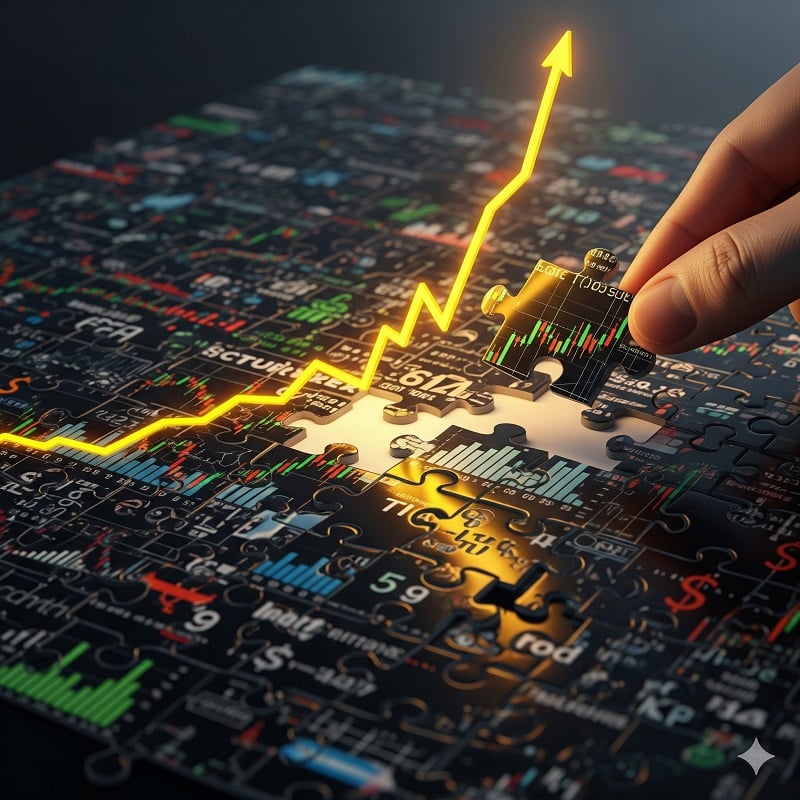
Half of stocks that double once go on to double again?
Let’s start with something every investor has felt at some point. You’re looking at a stock chart, and there it is — a stock that has already doubled. You scroll back, check the price six months ago, and think: “Man, if I had just bought then…”
And then comes the real question: Do I chase it now?
That hesitation is universal. Nobody wants to be the sucker who buys at the top. Nobody wants to get burned right after everyone else made their money. We’ve all heard that little voice: If it already doubled, the big money’s gone.
But here’s the thing: history doesn’t back that up. In fact, the numbers say something entirely different.
Why This Question Matters in 2025
The market going into 2025 is messy. Tech stocks exploded in 2023–2024, AI names went parabolic, and even boring industrials got caught in the rally. Some doubled, some tripled.
Now investors are split into two camps:
-
Camp A: “It’s over. The gains already happened. Don’t touch those stocks.”
-
Camp B: “This is just the start. We’re in a secular bull market.”
Both sides have a point. But if you step back and actually study the data, a third path emerges — one that doesn’t depend on guessing which camp is right.
That’s what Joel Litman’s research dug into. And what he found flips the script on this whole “too late” mindset.
The Trap of Thinking “It’s Too Late”
There’s a behavioral quirk at work here. Psychologists call it loss aversion — people hate losing twice as much as they like winning. So when we see a stock that already ran, we immediately imagine buying it right before it crashes. The pain of that scenario outweighs the thrill of a second run-up.
That’s why most investors avoid chasing winners. They think they’re being prudent. But by doing so, they may be leaving the biggest profits on the table.
If you doubt that, just look at Nvidia. The stock doubled between late 2022 and early 2023. A lot of people said it was “overvalued” at $200. Then it doubled again. And again.
Tesla did the same in 2019–2020. Apple’s done it more times than anyone can count. The pattern is there if you’re willing to see it.
What’s Hiding in Plain Sight
Here’s the kicker: these aren’t flukes. They’re part of a broader market pattern that Joel Litman calls the Doubles Anomaly.
When he and his team studied 3,000+ stocks over three decades, they found that roughly half of all stocks that doubled went on to double again.
Half. That’s not cherry-picking a few winners. That’s a coin flip with the odds stacked in your favor — if you know how to pick the right side.
And if you think about it, it makes sense. Companies strong enough to double in the first place often have the momentum, fundamentals, and investor attention to keep going. They’re not running on fumes — they’re just hitting their stride.
Why Most People Miss It
So why doesn’t everyone pile in? Because Wall Street teaches the opposite. Traditional finance says buy low, sell high. They tell you to look for bargains, unloved stocks, “value” names.
But markets don’t always reward the cheapest stock. They often reward strength. A stock that doubled isn’t necessarily expensive — it might be showing you it’s in the middle of a much bigger story.
The problem is, without a system, you can’t tell the difference between a true breakout and a fake-out rally. That’s why chasing feels scary. That’s why most investors sit on the sidelines while the winners keep running.
Why Investors Fear Buying “Too Late”
Every investor knows the sinking feeling. You watch a stock climb. You hesitate. It keeps climbing. By the time you convince yourself to buy, you worry you’re the last one in.
That fear has roots deeper than finance. It’s tied to human psychology — specifically, how we process risk, regret, and social proof. Understanding that psychology is critical, because it explains why so many people miss out on the very moves that make fortunes.
The Shadow of “Buying the Top”
Ask ten investors what their biggest fear is, and at least half will say some version of: “I don’t want to buy right before it crashes.”
It’s a fair fear. Nobody forgets stories of 2000, when investors piled into dot-com names right before the bubble burst. Or 2008, when real estate felt unstoppable — until it wasn’t.
The idea of “buying the top” isn’t just about losing money. It’s about looking foolish. Nobody wants to be the one who chased hype and ended up holding the bag.
But here’s the catch: this fear often paralyzes investors even in situations where the risk is far lower than it feels.
The Problem of Loss Aversion
Behavioral economists have studied this for decades. The conclusion is clear: people feel the pain of a loss about twice as intensely as the pleasure of a gain.
So imagine two outcomes:
-
You buy a stock, it doubles. Joy.
-
You buy a stock, it drops 20%. Misery.
The second experience will stick with you longer, shape your decisions more, and even affect your confidence. That’s why, after one bad experience “chasing a stock,” investors swear off doing it again — even if the numbers suggest it was the right move.
Loss aversion is powerful. It’s why casinos thrive. It’s also why most people underperform in the market.
Herd Behavior and the Comfort of the Crowd
Then there’s another layer: herd behavior.
Investors feel safer buying what everyone else is buying before it doubles. Once it runs, though, the tone changes. Suddenly, analysts say it’s “overvalued.” Commentators warn of bubbles. Financial media pumps out headlines about “frothy markets.”
And investors fall in line, because no one wants to be the lone outlier.
But notice the contradiction:
-
When a stock is flat or struggling, few want to touch it.
-
When a stock is up and strong, few want to touch it either.
This leaves a narrow psychological comfort zone where most people act — and it’s rarely where the biggest money is made.
The Misunderstood “Overvalued” Label
Another reason people avoid stocks after they double is the idea of valuation. The logic goes: if it doubled, it must be expensive now.
But valuation isn’t that simple. A company growing revenue 40% per year can double its price and still not be overpriced relative to future earnings. This is exactly how Nvidia went from a $100 billion company to over $1 trillion in market cap.
Many investors confuse price with value. Price doubling doesn’t mean value has peaked. Sometimes it means Wall Street is just catching up.
Historical Evidence Against the Fear
Think about the major winners of the past two decades:
-
Apple doubled dozens of times across its history.
-
Amazon doubled, then doubled again, then again — across multiple cycles.
-
Netflix doubled on its DVD business, then doubled again on streaming, then again on original content.
If you waited for the “perfect entry” — some magical moment where the stock felt cheap and undiscovered — you probably missed the real run.
History shows the fear of buying too late has stopped more people from making money than the actual danger of buying too late.
Why 2025 Investors Are Especially Prone to This Fear
The current market amplifies these anxieties. After the huge rallies in AI, semiconductors, and select industrials in 2023–2024, investors feel they already “missed it.”
But we’re also in a bullish environment where strong companies are still posting massive growth. It’s a classic setup for hesitation. People think: “If I buy now, I’m walking into a bubble. If I wait, I might miss the next surge.”
This indecision leaves portfolios stagnant while breakout stocks keep running.
The Gap Between Emotion and Data
The important takeaway here: fear is emotional, not mathematical.
The math says half of doubling stocks go on to double again. The data covers 30 years and thousands of companies. That’s not hype. That’s evidence.
But the human brain isn’t built for probabilistic thinking. We don’t process 50% odds rationally. We see the worst-case scenario and anchor to it.
This gap between how investors feel and what the numbers actually say is where Joel Litman’s work has power. His system doesn’t erase fear — it provides a framework that makes acting despite fear easier.

The Truth About Stocks That Already Doubled
There’s a piece of conventional wisdom in the markets that goes like this: “If a stock already doubled, the easy money is gone.”
On the surface, it makes sense. Prices move in cycles. Trees don’t grow to the sky. Eventually, every run ends.
But when you actually look at the data — not the opinions, not the headlines, but hard evidence across decades — you see a very different picture. In fact, stocks that already doubled often become more likely to double again.
That’s the heart of Joel Litman’s “Doubles Anomaly.” And if you understand why it exists, you start to see the market differently than most investors.
Why Doublers Aren’t Just Lucky Breaks
The first thing to understand is this: stocks don’t double by accident.
For a stock to move 100% higher, several forces usually align:
-
Strong earnings growth
-
Expanding profit margins
-
Institutional buying pressure
-
A shift in market narrative or perception
This isn’t noise. It’s momentum grounded in real business performance.
Now ask yourself: once a company gets those forces working in its favor, do they vanish overnight? Rarely. In many cases, the same drivers that powered the first double are still active — sometimes even accelerating.
That’s why Apple didn’t just double once in its iPhone era. It doubled multiple times. The same with Amazon through e-commerce and cloud. And Nvidia through gaming, AI, and data centers.
When the underlying growth engine is still running, one double is just the start.
The Data Joel Litman Uncovered
Joel Litman and his team studied more than 3,000 stocks across 30 years. They weren’t looking for hype or anecdotes. They wanted statistical proof.
What they found was surprising:
-
Roughly half of all stocks that double go on to double again.
-
And many do so faster the second time than the first.
This isn’t an edge case. It’s a recurring pattern. And it defies the intuition most investors carry.
If you stopped at “the stock already doubled, it’s too late,” you’d miss some of the market’s biggest wealth creators.
Why the “Doubles Anomaly” Exists
Skeptics might say: “Okay, but why would that be true? Surely past performance doesn’t guarantee future results.”
Fair point. But there are good reasons this anomaly keeps showing up.
-
Momentum is real. Wall Street analysts often dismiss momentum as “trading noise.” But decades of academic research prove momentum is one of the strongest forces in markets. Winning stocks keep winning more often than not.
-
Institutional lag. Big funds don’t move in and out of positions overnight. It can take months — even years — for pension funds, mutual funds, and ETFs to fully build exposure to a high-growth company. That slow-motion buying keeps pressure on the stock long after its first double.
-
Narrative shifts take time. The story around a company doesn’t flip instantly. Think about how long it took investors to view Tesla as more than a niche automaker. The stock doubled, then doubled again, then doubled again as the narrative evolved.
These three forces — momentum, institutional lag, and narrative evolution — are why the anomaly holds up across decades of data.
Why Most Investors Still Miss It
If the anomaly is so powerful, why do most investors ignore it?
Two reasons: psychology and bad math.
Psychology we already covered in Part 2 — fear of buying “too late” and loss aversion.
The bad math comes from how people interpret valuation. They look at price instead of earnings. They assume “up = expensive.” But often, the opposite is true: growth outpaces the price, leaving the stock actually cheaper after a big run.
Joel Litman’s accounting-based system, Altimeter Pro, was built specifically to cut through this bad math. It adjusts reported earnings to reflect the real economics of a business — and it shows when a company’s fundamentals still justify further gains, even after a double.
Examples in the Real World
To make this less abstract, look back at Nvidia.
From 2016 to 2018, the stock doubled as gaming GPUs exploded in demand. Investors thought the run was over. Then came AI and data centers. The stock doubled again, then again, pushing its market cap past $1 trillion.
The same story played out with Netflix. It doubled during its DVD-to-streaming transition. Then doubled again when original content took off. Then doubled again as global expansion kicked in.
These aren’t outliers. They’re case studies of how the “Doubles Anomaly” plays out when business momentum continues.
The Breakout Zone
Here’s where Joel’s work adds another layer. His research shows there’s a specific “sweet spot” — what he calls the Breakout Zone — where stocks that already doubled are most primed for another surge.
This isn’t random. It’s where momentum, institutional buying, and valuation all align. Historically, stocks entering this zone produced average returns of 164%.
That’s not a prediction. That’s a backtested average across years of data. It’s the repeatable nature of the anomaly that makes it powerful.
Why This Matters for 2025
We’re in a market where AI, biotech, and energy transition are driving real business growth. The first wave of doubles already happened for many names. The temptation is to assume “too late.”
But if the anomaly holds — and the data says it does — this is exactly where opportunities hide. The second surge often leaves the first in the dust.
How Joel Litman Spots the Next Breakout Stocks
Patterns like the “Doubles Anomaly” are fascinating. But data alone doesn’t make you money.
The real question is: how do you know which of today’s stocks are in position to double again?
That’s where Joel Litman’s approach stands apart. His system isn’t built on chasing charts or following Wall Street ratings. It’s built on re-engineering the numbers that drive markets — the true fundamentals that most investors never see.
The Accounting Problem Nobody Talks About
Start here: the earnings you see reported in quarterly results often aren’t accurate pictures of a business.
That sounds odd. But it’s true. Public companies report earnings based on GAAP (Generally Accepted Accounting Principles). While GAAP creates consistency, it’s also riddled with quirks, distortions, and loopholes.
For example:
-
Research and development spending often gets expensed right away, even if it creates long-term value.
-
Stock-based compensation can warp profit margins.
-
One-time charges can make a strong quarter look weak.
The result? Reported numbers often understate — or overstate — the real profitability of a company.
Joel Litman built his career on cutting through this fog. He developed a framework called Uniform Accounting that strips out distortions and reconstructs financials the way they should look if you were analyzing a private business.
Why This Matters for Finding Doublers
Now connect this back to the Doubles Anomaly.
If a stock already doubled, traditional analysis often screams “too expensive.” P/E ratios balloon. Price-to-sales looks stretched. Wall Street downgrades start flying.
But when you restate the numbers with Uniform Accounting, a very different picture can emerge. Suddenly you see:
-
The company’s true earnings are much higher than GAAP suggests.
-
Margins are expanding, not contracting.
-
Growth runway is longer than the headline numbers imply.
This explains why many “overvalued” stocks double again. They’re not actually overvalued — they’re misunderstood.
The Altimeter Pro Advantage
Litman packaged this accounting framework into a tool called Altimeter Pro. Think of it like X-ray vision for stocks.
Instead of trusting Wall Street’s view, Altimeter re-scores companies based on corrected earnings. It uses a simple grading system — green for strong, red for weak — to show whether a stock’s fundamentals justify higher prices.
For investors, this solves a huge problem. You don’t need to build models from scratch or dig through hundreds of pages of financial statements. The heavy lifting is already done.
The Breakout Screener
In 2025, Litman took things further. Alongside Altimeter Pro, he launched a Breakout Screener — a tool designed specifically to find stocks sitting in the “Breakout Zone.”
Here’s what it looks for:
-
A stock that has already doubled in the recent past.
-
Uniform Accounting signals that fundamentals remain strong.
-
Price momentum aligning with institutional buying patterns.
When these conditions line up, you don’t just have a stock that doubled. You have a candidate for another run — potentially much bigger than the first.
Why Screens Work Better Than Gut Feel
Most investors still rely on gut feel. They see a chart, hear a news story, read a Wall Street note, and decide.
The problem is, gut feel is wired with biases. We anchor to round numbers, we chase hype, we overweight recent news. It’s messy.
A rules-based screen removes that noise. It says:
-
Forget the chatter.
-
Forget the fear.
-
Just look at the data.
That’s why Litman’s team uses these tools religiously. They don’t chase narratives. They filter for repeatable setups.
Case Study: A Real Double and Its Sequel
Take Netflix. After its first surge during the streaming pivot, most analysts called it done. Valuation looked stretched. Competition was heating up.
Uniform Accounting told another story. Cash flows were ramping. Margins were healthier than GAAP showed. Subscriber growth still had room to run globally.
The result? The stock doubled again, then again. Investors who trusted the tools instead of the fear had a chance to capture gains most thought impossible.
This pattern repeats across sectors — semiconductors, biotech, industrials. When the fundamentals align, the “Doubles Anomaly” plays out in plain sight.
Why 2025 Could Be the Sweet Spot
Right now, the market is in an unusual phase. AI, green energy, and biotech are driving massive disruption. Many of the early leaders already doubled in 2023–2024.
That tempts investors to step back. To say: “We missed it.”
But Litman’s tools show otherwise. The fundamentals in certain names remain strong. Institutional money is still moving in. Narratives are still evolving.
For investors who understand the Breakout Zone, 2025 may not be the end of the run — it may be the middle.
Historical Examples of the Doubles Anomaly in Action
It’s one thing to talk about theories and tools. But nothing makes an idea feel real like seeing it play out in actual stocks.
That’s where the “Doubles Anomaly” becomes more than an academic pattern. Once you see the companies that doubled — and then doubled again — you realize this isn’t rare. It’s not a fluke. It’s part of how big winners behave.
Let’s walk through a few case studies.
Apple: The iPhone Effect and Beyond
Everyone knows Apple as a trillion-dollar company today. But think back to the mid-2000s. Apple was known mainly for iPods and Macs. It was respected but not dominant.
Then came the iPhone in 2007. Within a couple years, Apple stock doubled. Many investors assumed that was the peak — after all, how much bigger could a phone business get?
But the fundamentals told another story. Margins were rising. The app ecosystem was exploding. Global adoption had barely started.
The result? Apple doubled again. And again. By the time skeptics realized the first doubling wasn’t the end, Apple had already multiplied wealth several times over.
Amazon: From Bookstore to Cloud Titan
Amazon has lived through more “you missed it” calls than almost any stock.
In the late 1990s, it doubled as the poster child of e-commerce. Then the dot-com bust hit. Analysts wrote it off as finished.
But behind the scenes, Amazon was building logistics, expanding product categories, and eventually creating AWS — a cloud division that would transform enterprise computing.
Every time the stock doubled, people said: “That’s it. Too expensive now.” Every time, Amazon went on to double again.
Today, AWS alone generates tens of billions in annual revenue. Investors who thought the first double was the end missed one of the greatest compounding machines in history.
Netflix: The Pivot that Paid Off
Netflix is another textbook case.
At first, it doubled during its DVD-by-mail heyday. Then investors assumed the move to streaming was too risky. After the stock doubled again, skeptics pointed to competition from Hulu, Amazon, and eventually Disney+.
Yet Netflix kept growing. International expansion, original content, and user data gave it an edge no competitor could match.
Each new phase produced another doubling. The stock didn’t just move in one burst — it staged multiple surges as its business model evolved.
Nvidia: Riding Wave After Wave
Few companies illustrate the Doubles Anomaly as clearly as Nvidia.
The first double came from graphics chips for gamers. Then it doubled again when GPUs became essential for AI research and machine learning.
Then came data centers. Then crypto mining. Then generative AI. Each new wave of demand pulled Nvidia into another Breakout Zone.
If you looked only at the price after each surge, it seemed “too late.” But if you looked at the fundamentals — explosive revenue growth, margin expansion, and new use cases — it was often still early.
Tesla: A Lesson in Narrative Shifts
Tesla may be the ultimate story of narrative-driven doubles.
The first surge came when it proved electric vehicles weren’t just prototypes. The second when Model S and Model 3 showed mass-market viability. Later doubles came as Tesla expanded into China, scaled production, and built energy storage solutions.
The skeptics kept repeating the same refrain: “It’s overvalued. It can’t last.” But Tesla’s fundamentals — battery technology, cost advantages, brand strength — kept pushing it higher.
Tesla isn’t without volatility, but its long series of doubles shows how narratives can evolve over time.
Lessons Across the Board
What ties these examples together isn’t luck. It’s a common pattern:
-
A company doubles on real business momentum.
-
Skeptics assume the move is over.
-
Fundamentals keep improving.
-
The stock enters another Breakout Zone.
This cycle repeats more often than most realize. And that’s the opportunity the Doubles Anomaly highlights.
Why These Stories Still Matter
Some might say: “That’s hindsight. It’s easy to point to winners now.”
True — but hindsight isn’t the point. The point is that at every stage, these companies looked “expensive” by traditional measures. Yet Uniform Accounting and momentum data suggested otherwise.
The lesson isn’t to chase every hot stock. The lesson is to recognize when a strong company is still in position to double again.
That’s what Joel Litman’s system is designed to spot.
2025 Parallels
Why go over Apple, Amazon, Netflix, Nvidia, and Tesla now? Because the same setup is unfolding in today’s leaders.
AI, biotech, and energy transition are creating new classes of companies that already doubled in 2023–2024. Many investors assume the run is done. But history says otherwise.
If the fundamentals remain strong, 2025 could be the year those names enter their Breakout Zone.
Why 2025 Could Be the Perfect Storm for Breakouts
Every market cycle has its flavor. Some years are about recovery after a crash. Others are about grinding sideways as investors wait for clarity. And then there are years when the stars line up — growth, innovation, and liquidity collide to create fertile ground for big winners.
2025 is shaping up to be one of those years.
For investors willing to look beyond the noise, the setup is remarkably similar to past environments that birthed multi-year doubles.
A Bullish but Volatile Market
The broad market picture is unusual. On one hand, we’re in a bullish environment. The S&P 500 has recovered from its post-pandemic shocks. Corporate earnings are hitting records in several sectors. Investor sentiment has improved.
But volatility hasn’t gone away. Interest rate debates, geopolitical uncertainty, and inflation pressures still create swings.
This mix — bullish trend plus volatility — is exactly the kind of backdrop where breakout stocks thrive. Why? Because volatility shakes out weak hands, while the underlying bullishness keeps momentum alive for strong companies.
AI and the Next Industrial Wave
The AI boom that kicked off in 2023 hasn’t cooled. If anything, it’s spreading.
-
Cloud providers are scaling up AI infrastructure.
-
Chipmakers are pushing new boundaries in performance.
-
Software firms are embedding AI tools into everyday workflows.
We’re seeing a repeat of the early internet years, when every new wave of adoption created another leg of growth.
Here’s the key: many AI-related stocks already doubled once. The temptation is to assume the run is over. But history shows this is often just the first leg of a longer cycle.
Think about Nvidia. It doubled on gaming, doubled again on AI research, and doubled yet again as generative AI took off. 2025 could be the year where second-wave AI players — not just chipmakers, but software and services — enter their own Breakout Zones.
Biotech’s Quiet Revolution
AI is stealing headlines, but biotech is having a quieter, equally important revolution. Gene therapies, CRISPR applications, and mRNA innovations are moving from labs to markets.
Biotech stocks are notorious for volatility. A single trial result can send shares soaring or collapsing. But the winners in this space often follow the anomaly pattern: one double as proof-of-concept, another as commercialization scales.
With FDA approvals accelerating and big pharma partnerships piling up, 2025 could see a wave of biotechs entering the Breakout Zone.
The Energy Transition
The move toward renewable energy and electrification isn’t slowing. Governments are pouring billions into incentives. Consumers are adopting faster than expected. And companies across solar, battery tech, and infrastructure are scaling up.
Here again, we see the anomaly pattern forming. Early players doubled as proof of adoption. Now the fundamentals — revenues, capacity, margins — are catching up. The second double often comes when markets realize the shift is durable, not temporary.
The Role of Institutional Money
Another factor lining up in 2025: institutional capital.
Large funds are sitting on record levels of cash. After years of uncertainty, they’re moving money back into equities. But institutions don’t build positions overnight. It can take months, even years, for a fund to accumulate billions in exposure to breakout names.
That slow-motion buying pressure is a tailwind for companies in the Breakout Zone. It’s one of the hidden forces that makes the Doubles Anomaly possible in the first place.
Retail Investors Are Hesitant
Interestingly, while institutions are reloading, many retail investors are still hesitant. Surveys show individuals remain cautious after the shocks of inflation and rate hikes.
That caution creates opportunity. Retail money often floods in after the second double, not before. For investors who act earlier, that lag is an advantage.
Why This Moment Feels Familiar
If you zoom out, 2025 resembles other inflection years in market history:
-
The mid-1990s as the internet began scaling.
-
The early 2010s when cloud and mobile took off.
-
The mid-2010s during biotech and clean energy surges.
Each of those periods produced stocks that doubled — and then doubled again. 2025 carries the same ingredients: innovation, liquidity, and shifting narratives.
Not Every Stock Will Make It
Of course, not every AI, biotech, or energy stock will deliver a second double. Plenty will stall. Some will collapse. That’s the danger of treating this like hype-chasing.
The difference lies in fundamentals. Uniform Accounting shows which companies’ earnings and margins truly justify another run. The Breakout Screener highlights where momentum and fundamentals overlap.
That’s how you separate the next Nvidia from the next Pets.com.
Inside Joel Litman’s Breakout 2025 Event
Patterns are powerful. Data is convincing. But at some point, you want specifics. Which stocks? Which signals? How do you actually apply this research to build wealth in 2025?
That’s the role of Joel Litman’s Breakout 2025 event. It’s not just another webinar. It’s where he brings together the decades of data behind the “Doubles Anomaly,” his accounting-based tools, and the new portfolio designed to capture the next wave of doubles.
The Core Idea: The Doubles Anomaly
At the heart of Breakout 2025 is the discovery we’ve been discussing: roughly half of all stocks that double once go on to double again.
That sounds simple, almost too simple. But as we’ve seen, the anomaly holds across 30 years and 3,000 companies. It’s as close to a repeatable pattern as you’ll find in the messy world of markets.
And here’s the kicker: most investors never act on it. They hesitate. They assume the first double means “too late.” That’s exactly the gap Litman is trying to close with this event.
The Tools Behind the Curtain
Litman isn’t a chartist. He’s not reading tea leaves or chasing hype. His edge comes from Uniform Accounting, which adjusts financial statements to reflect a company’s true economics.
That framework powers Altimeter Pro, a tool that re-scores companies based on corrected earnings. Instead of trusting Wall Street P/E ratios, Altimeter shows whether a stock’s fundamentals still justify growth.
Now add the new Breakout Screener. It hunts specifically for:
-
Stocks that already doubled.
-
Uniform Accounting signals showing strong fundamentals.
-
Momentum and institutional activity suggesting more upside.
Together, these tools narrow the universe of thousands of stocks into a focused list of breakout candidates.
The Launch of Breakout Profits
Breakout 2025 also marks the launch of a new research service: Breakout Profits.
This isn’t just a report or a one-time stock pick. It’s a curated model portfolio designed around the Doubles Anomaly. The idea is simple: instead of trying to guess which sectors or themes might win, follow the data to the companies already proving themselves.
Subscribers get:
-
A running list of stocks in the Breakout Zone.
-
Access to the Altimeter Pro platform.
-
The Breakout Screener tool for filtering new opportunities.
-
Ongoing analysis as narratives and fundamentals evolve.
It’s essentially a way to systematize what we’ve been talking about — so you’re not just reading about anomalies, but acting on them.
Why Now?
Some might ask: why launch this in 2025? Why not earlier?
Because the timing lines up. The first leg of the bull run (2023–2024) already produced dozens of doubles. That’s the setup for the second leg, where the anomaly historically plays out.
It’s the same pattern we saw with Apple after the iPhone, Amazon after AWS, Nvidia after AI adoption. The big names already moved once. Now the question is which of them — and which emerging players — are set for round two.
That’s the opportunity Breakout 2025 is designed to capture.
A Different Kind of Event
There are plenty of financial “events” online, many of which feel like pure hype. Breakout 2025 is different in a few ways:
-
It’s evidence-driven. Every claim ties back to decades of data.
-
It’s educational. Even if you don’t act on the service, you’ll walk away understanding the Doubles Anomaly and how it applies.
-
It’s timely. The launch coincides with a real market moment — not just a random calendar date.
That combination makes it resonate with both cautious and aggressive investors.
Who It’s For
The event isn’t pitched to day traders looking for penny-stock fireworks. It’s aimed at long-term investors who want a disciplined edge without adding risk.
If you’ve ever:
-
Hesitated to buy after a stock doubled,
-
Regretted missing Apple, Amazon, or Nvidia early,
-
Or wanted a system that helps cut through hype and fear,
…then this event speaks directly to that gap.
The Bigger Picture
At a higher level, Breakout 2025 is about reframing how investors think about growth stocks. Instead of chasing hype early or panicking late, it’s about recognizing that real doubles often come in waves.
The first wave proves a business model. The second wave creates the fortunes.
By focusing on companies entering the Breakout Zone, Litman’s approach aims to capture that second wave with less noise and fewer false starts.
How Investors Can Use the Doubles Anomaly in Their Own Portfolios
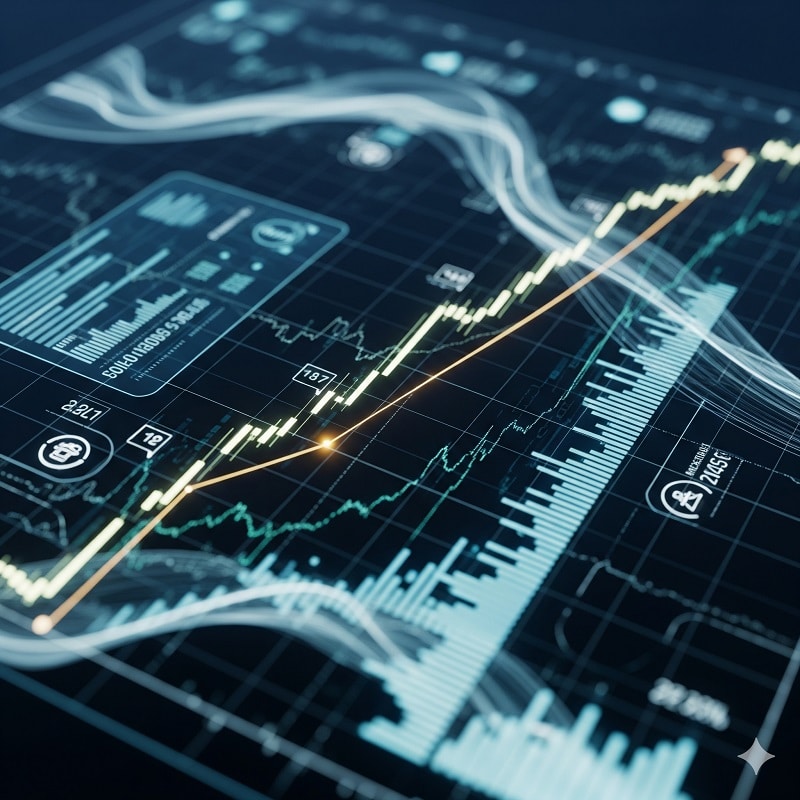
We’ve talked about psychology, data, historical examples, and tools. Now let’s bring it home: what does this actually mean for your portfolio in 2025? How can you apply the Doubles Anomaly without falling into the traps most investors do?
It starts with perspective.
Step 1: Reframe Your Thinking
The first thing you need to do is adjust your mindset.
Most investors see a stock that doubled and think: “It’s too late.” That’s the exact opposite of what history suggests.
Instead, try thinking: “This stock just proved its business model works. Could it prove it again?”
Half of all stocks that double go on to double again. That’s not a guarantee — nothing in investing is — but it’s an edge. Thinking this way shifts you from fear-driven investing to probability-driven investing.
Step 2: Focus on Fundamentals
The next step is checking the underlying business.
Don’t rely solely on price action or headlines. Ask questions like:
-
Are revenues and margins still growing?
-
Is the company expanding into new markets or products?
-
Is institutional buying or insider buying supporting the stock?
If the fundamentals are still strong, the stock may well be in the second leg of its doubling potential.
This is where tools like Joel Litman’s Altimeter Pro become invaluable. They help filter out the noise, showing you which companies are fundamentally solid even after a big run.
Step 3: Look for the Breakout Zone
Not all doubling stocks are equal. Timing matters.
Litman calls the sweet spot the Breakout Zone — where fundamentals, momentum, and market perception align. Stocks in this zone are statistically more likely to double again.
Even without proprietary tools, you can approximate this by:
-
Tracking stocks that doubled in the past 6–18 months
-
Checking if earnings, cash flow, and margins are still improving
-
Observing if volume and institutional interest are increasing
This narrows your focus to stocks with repeatable potential instead of chasing every hot name.
Step 4: Diversify Across Opportunities
Even with the Doubles Anomaly, not every stock will perform. That’s why you don’t want to bet everything on one company.
A practical approach is to create a small, concentrated set of 5–10 potential candidates, balancing sectors, market caps, and growth drivers. This spreads risk while maintaining exposure to high-upside opportunities.
Remember: the anomaly is an edge, not a guarantee. Diversification keeps the edge intact without catastrophic exposure.
Step 5: Manage Risk, Don’t Eliminate It
Investing in doubling stocks carries risk — volatility, profit-taking, market shocks. The goal isn’t to avoid risk completely but to manage it intelligently.
Use stops, position sizing, and ongoing monitoring. Focus on fundamentals, not just price. And resist the urge to chase hype outside your screened list.
This disciplined approach separates opportunistic investors from gamblers.
Step 6: Watch for Narrative Shifts
Many repeat doublers succeed because the market narrative evolves. Netflix wasn’t just about DVDs, Nvidia isn’t just about gaming, Tesla isn’t just about electric cars.
Keep an eye on emerging trends that can push a stock into a new phase. If the fundamentals are solid and the story is shifting positively, that stock could be entering a second or third Breakout Zone.
The goal is to pair data with market psychology — understanding when the market is starting to notice what fundamentals already show.
Step 7: Take Advantage of Curated Research
Not every investor has time to comb through thousands of companies and adjust financial statements. That’s why services like Breakout Profits exist.
By subscribing, you get:
-
Stocks pre-screened using the Doubles Anomaly
-
Uniform Accounting metrics simplified
-
Access to tools for tracking Breakout Zones
Even if you prefer DIY investing, seeing these curated setups can accelerate learning and help you spot patterns in real time.
Step 8: Keep Learning and Iterating
Markets evolve, and anomalies can shift over decades. Even a proven pattern like this requires constant monitoring.
The smartest investors treat these signals as part of a system, not a one-time trick. Track what works, what fails, and how narratives change. Over time, your ability to identify repeat doublers improves — sometimes before the broader market notices.
Putting It All Together
Using the Doubles Anomaly effectively comes down to three things:
-
Mindset — don’t fear a stock just because it already doubled.
-
Fundamentals — check if growth, margins, and momentum are intact.
-
Timing — look for the Breakout Zone, where probabilities are highest.
With this framework, you’re not gambling on hype or guessing the next tech fad. You’re systematically identifying opportunities with a proven edge.
Conclusion
Investing isn’t easy. Fear, hesitation, and information overload keep even experienced investors on the sidelines at exactly the wrong time. We’ve spent the last several sections unpacking the Doubles Anomaly — why it exists, how it’s backed by decades of data, and why it continues to deliver opportunities for investors who know where to look.
The key lesson is simple: stocks that have already doubled are not automatically “too late” to buy. On the contrary, historical evidence shows that roughly half of them go on to double again. That’s not speculation; it’s a pattern repeated across thousands of companies over three decades.
The Role of Discipline and Tools
Of course, identifying repeat doublers isn’t magic. It requires discipline, data, and a framework to filter out noise. Joel Litman’s approach — combining Uniform Accounting, Altimeter Pro, and the Breakout Screener — is designed precisely to make that process manageable and evidence-driven.
By focusing on the fundamentals, institutional activity, and the Breakout Zone, investors can make decisions that tilt the odds in their favor. These tools don’t remove risk, but they reduce guesswork and help you act without being paralyzed by fear or conventional “wisdom.”
Historical Proof
History is full of examples: Apple, Amazon, Netflix, Nvidia, Tesla. All of them doubled, and all of them doubled again — sometimes multiple times. Skeptics assumed the first surge was the peak, but the combination of strong fundamentals, narrative shifts, and momentum carried these companies through second and even third doubles.
If we zoom out to 2025, the environment has similar characteristics: innovation-led sectors, institutional capital reentering the market, and retail investors still hesitant after recent volatility. It’s the kind of setup where the Doubles Anomaly historically thrives.
A Framework, Not a Shortcut
One thing to be clear about: this isn’t a shortcut or a guaranteed win. No investment strategy ever is.
The value of the Doubles Anomaly lies in its framework:
-
How to evaluate which stocks that doubled have real underlying strength.
-
How to combine fundamentals with momentum and market signals.
-
How to recognize the Breakout Zone before the broader market catches on.
It’s a disciplined, repeatable approach that improves your odds — and that’s the best any investor can do in an uncertain market.
Why Breakout 2025 Matters
Joel Litman’s Breakout 2025 event isn’t just a seminar. It’s a distillation of decades of research, combined with actionable tools and a curated portfolio of potential repeat doublers.
For investors, it’s a chance to see the anomaly applied in real time. You can learn to identify the next breakout stocks, understand which fundamentals matter, and see how narrative shifts and institutional activity intersect with growth potential.
It’s about making smarter, evidence-based decisions in a market that’s otherwise noisy, emotional, and unpredictable.
Final Thoughts
Fear of “buying too late” has kept countless investors from capturing enormous gains. Understanding the Doubles Anomaly flips that fear on its head. Half of doubling stocks go on to double again. Patterns exist. Tools exist to identify them. History proves it works.
2025 presents an unusual alignment of market conditions that may make this anomaly especially actionable. The combination of innovation, liquidity, and momentum creates a fertile environment for the next wave of breakouts.
The lesson is clear: don’t let fear paralyze you. Use data. Focus on fundamentals. Look for the Breakout Zone. And approach the market with a framework, not just instinct.
In the end, investing is about making informed, disciplined decisions — and the Doubles Anomaly gives you a rare, statistically backed lens for doing exactly that.
FAQs About the Doubles Anomaly and Breakout Investing
Even seasoned investors have questions when they first hear about the Doubles Anomaly. Below, we answer the most common ones — the kind you might actually type into Google while researching 2025 stock opportunities.
What exactly is the Doubles Anomaly?
The Doubles Anomaly is a market pattern discovered by Joel Litman. Simply put: roughly half of all stocks that double in price go on to double again.
It’s based on decades of data — over 3,000 stocks across 30 years. Unlike hype-driven trends, this pattern is grounded in repeatable business fundamentals, not luck.
Does this mean all stocks that double will double again?
No. Not every stock repeats. That’s why the anomaly is about probability, not certainty.
Joel’s system identifies which stocks are more likely to double again by combining:
- Fundamental analysis (via Uniform Accounting)
- Price momentum
- Institutional activity
When these signals align in the Breakout Zone, the odds of a second doubling improve significantly.
What is the Breakout Zone?
The Breakout Zone is the sweet spot for stocks that have already doubled.
It occurs when:
- Fundamentals remain strong
- Market momentum aligns with institutional buying
- The narrative around the stock is evolving positively
Historically, stocks entering the Breakout Zone have generated average returns of 164% in subsequent runs.
How do I know if a stock is in the Breakout Zone?
You can identify it in a few ways:
- Track stocks that recently doubled (typically in the last 6–18 months)
- Check for improving revenue, cash flow, and margins
- Look for increasing volume and institutional interest
For investors who want a shortcut, tools like Joel Litman’s Breakout Screener do this automatically.
Is this approach safer than other growth strategies?
It can be. The Doubles Anomaly focuses on companies with proven business momentum, not speculative bets or unknown startups.
That said, no investment is risk-free. Even stocks in the Breakout Zone can experience volatility or sudden market shocks.
The advantage is that you’re using a data-driven, fundamentals-based system rather than guessing or chasing hype.
Can this work in any market environment?
The anomaly has been observed across multiple cycles, including bull markets, corrections, and periods of volatility.
That said, timing matters. Periods of high liquidity, technological disruption, or strong secular trends tend to amplify the pattern — which is why 2025 looks particularly promising for certain sectors like AI, biotech, and clean energy.
Do I need special tools to apply this strategy?
You don’t need them, but they help.
Joel Litman’s Altimeter Pro and the Breakout Screener:
- Adjust reported earnings to reflect true business fundamentals
- Highlight companies in the Breakout Zone
- Make it easier to track repeat doublers without manually combing through financial statements
For DIY investors, understanding Uniform Accounting principles can also guide smarter stock selection.
How much money can I expect to make?
Past performance doesn’t guarantee future results, and returns will vary.
Historical backtesting shows average potential returns of 164% for stocks entering the Breakout Zone — but that’s across many companies, not a single pick. The key is to use the system to tilt the odds in your favor, rather than chasing outsized returns from a single stock.
Is this suitable for long-term investors?
Absolutely. This approach is designed for equity investors, not day traders.
The idea isn’t to flip stocks overnight. It’s to identify companies with repeatable growth potential and position yourself for subsequent waves of gains, while still managing risk.
How does this differ from regular momentum investing?
Momentum investing usually focuses on price action: stocks going up recently will continue to go up.
The Doubles Anomaly combines momentum with true fundamentals. That’s why it filters out “fake” momentum — stocks that spike briefly but lack underlying business strength.
It’s momentum plus accounting insight, which historically improves the odds of catching a second doubling.
Can small investors realistically take advantage of this?
Yes. The tools and principles can be applied to portfolios of almost any size.
Even if you can’t invest large sums, focusing on 3–5 high-probability candidates in the Breakout Zone can provide exposure to the pattern without overcomplicating your portfolio.
What sectors should I watch in 2025?
Based on current trends:
- AI and semiconductors – infrastructure and applications are growing rapidly
- Biotech – gene therapies and mRNA innovations are entering commercialization
- Clean energy and electrification – long-term secular tailwinds
These sectors already have companies that doubled in 2023–2024, meaning the next Breakout Zone could be right in front of us.




